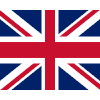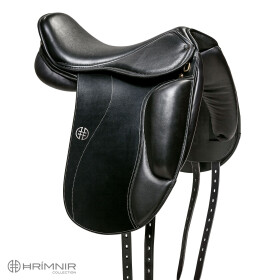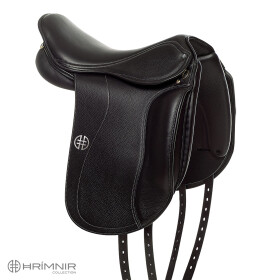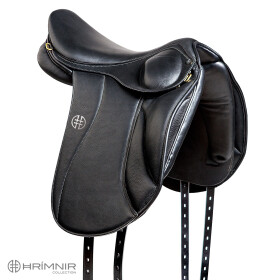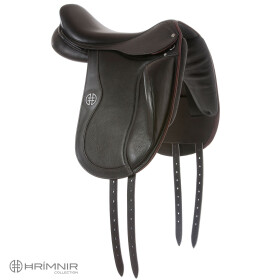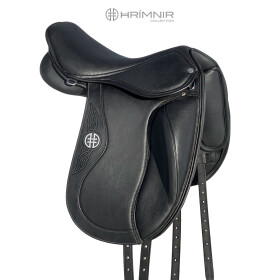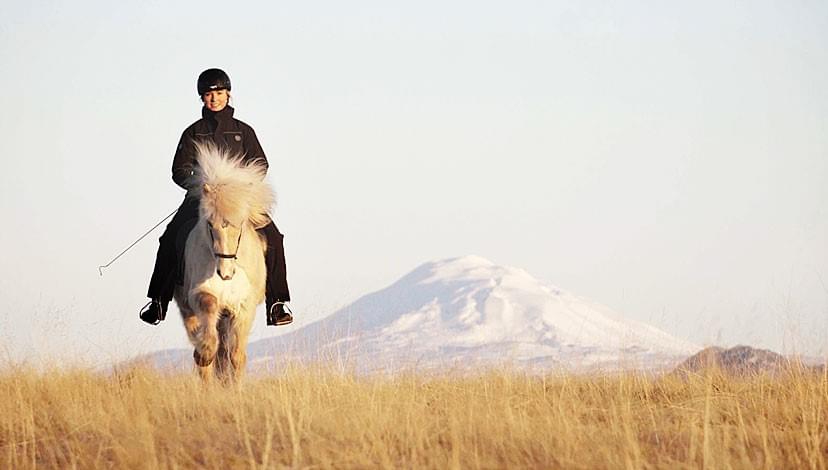Saddle fitting

To ensure that the ride is a pleasure for both rider and horse, it is essential that the saddle fits the horse, and is positioned correctly on its back. The saddle should allow the horse free movement and the development of a round and well-balanced topline.
Saddle positioning
The saddle needs to be in the right position on the horse’s back in order to judge its fit, and to allow the horse correct movement.
- The saddle needs to sit 2-3 fingers behind the shoulderblade and its muscles (see picture below). Notice that the shoulderblade rotates backwards during every step and the saddle must not interfere with this movement.
- The saddle must nowhere touch the spinal processes, or the dorsal ligament system. This means that the gullet channel needs to be 3-4 fingers wide along the whole saddle.
- The saddle should not extend over L3 (3rd lumbar vertebra). You can find this vertebra by finding the last rib, and drawing a straight line upwards to the spine. The saddle may extend as far as this point.
- Find the last rib again and follow it up to the spine to find T18 (18th thoracic vertebra). The main weight distribution of the rider should be in front of this point.
- The saddle panels should not be wider than where the edges of the longissimus dorsi muscle transition into the ribs.
- The billets and the girth should point vertically downwards and close where the girth is still supported by the breast bone, about one flat hand behind the elbow of the horse.
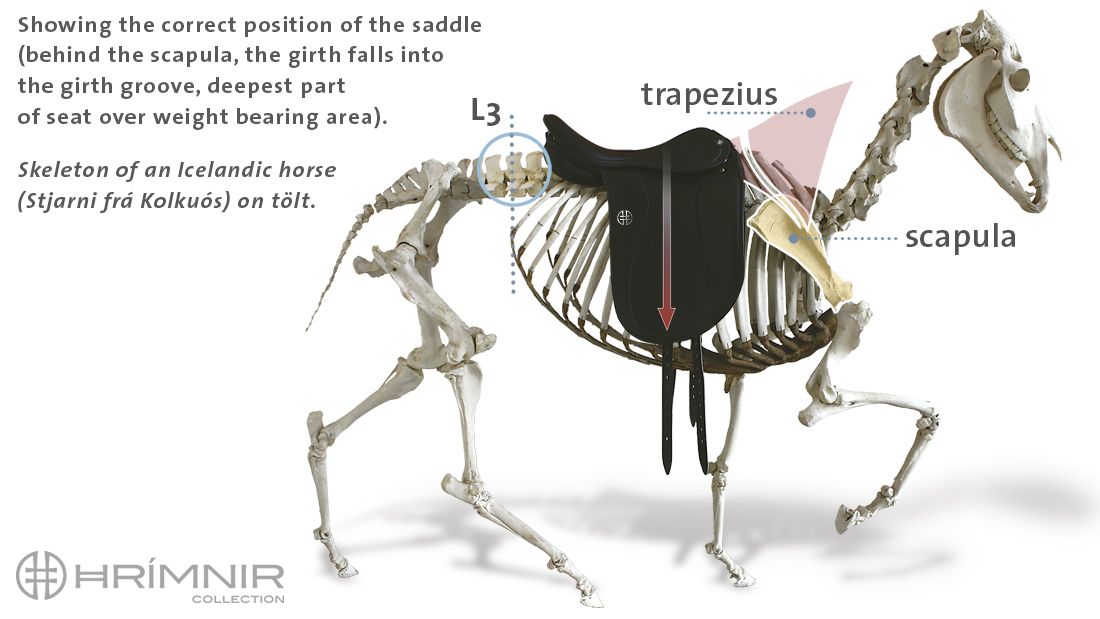
Saddle fitting
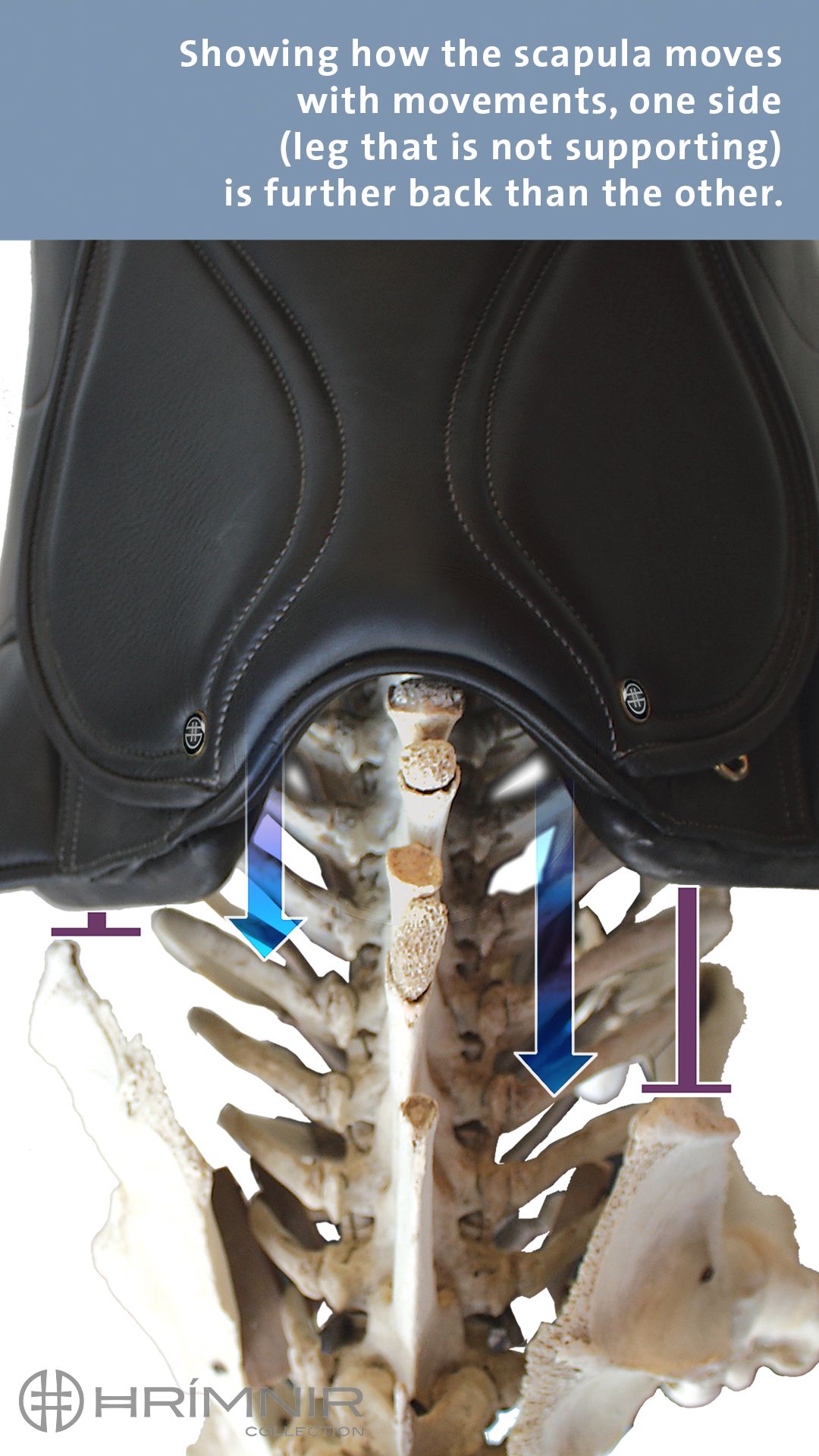 Make sure the saddle does not hinder the backwards movement of the shoulder blade and allows enough room at the top and at the side of the withers. Place your hand sideways, not flat, under the pommel to see if there is enough clearance over the horse’s withers. Direct pressure on the withers will cause pinching and distress to the horse.
Make sure the saddle does not hinder the backwards movement of the shoulder blade and allows enough room at the top and at the side of the withers. Place your hand sideways, not flat, under the pommel to see if there is enough clearance over the horse’s withers. Direct pressure on the withers will cause pinching and distress to the horse.
Slide your flat hand under the front of the saddle from the pommel downwards, to feel if there are pressure points on the trapezius area (see picture above), which will cause pinching and limit blood circulation. The gullet plate must be parallel to the shoulder blade and wide enough for the shoulder muscle. The front of the tree and points have to be at a similar angle as the trapezius area upon which they will rest with a tolerance of max 10 degrees.
A too narrow head gullet will place the pommel too high, causing too much pressure on either side of the withers and soreness or even damage of the muscles. Also, there will be too much pressure on the lumbar muscles. The rider will be pushed too far backward in the seat, and become unbalanced. It will also create excessive forward-movement of the saddle.
A too wide head gullet will place the pommel too low and offer insufficient clearance on either side of the withers, causing soreness and rubbing of the withers. The saddle will sit too low in the front, and the rider will become unbalanced. It will also create excessive forward-movement of the saddle.
The panels should lie flat and even on the horse’s back and give the spine sufficient clearance. You can test this by running your flat hand underneath and checking the panel’s position by lifting the sweat flap to look. You should not see any light under the panels in the middle (bridging) or at either end of the saddle (rocking).
The panels need to have 3-4 fingers space between them to allow complete clearance of the horse’s dorsal spinal process. You should also be able to fit 2 fingers between the top of the spine and the cantle at the back of the saddle, with the rider in the saddle. A horse needs to keep the back muscles (longissimus dorsi) relaxed so that its back can rise, the hindquarters can step under, and the forehand can become light.
Now girth up the saddle and look at the previous points again. Make sure the saddle is correctly positioned on the horse’s back. Sit in the saddle and have someone check the previous points for you again. Finally, ride in all gaits in the saddle and make sure that both you and your horse are comfortable and can move freely.
At the end of the day, remember that a horse’s performance depends on many factors, and the saddle is just one of them. What is most important is that the horse performs well and that you feel good in the saddle!
A good saddle pad can sometimes help accommodate some imbalance in the muscles or topline of the horse, as well as slight tight spots, or bridging of the panels.
Don´t forget the rider!
In saddle fitting we must always consider the horse AND the rider. The best fitting saddle is no help for the horse if the saddle does not allow the rider to sit supple and in balance! The seat must offer stability and security without wedging the rider into a position. The leg support of the saddle must allow the rider’s leg to hang comfortably and relaxed straight down with the knee not being angled outward. The seatbones should rest in the middle of the saddle and the pelvis should be able to move forward and backward without restriction. The seat should offer the rider support without forcing him into a position, and offer close contact to the horse. The seat must not be too small for the rider, since this limits his ability to move in the saddle and confines him to a cramped and unbalanced position.
The most important criterion is that the rider is comfortable in the saddle and can sit balanced in all gaits. Only with a balanced and supple rider can the horse perform at its best!
Saddle length
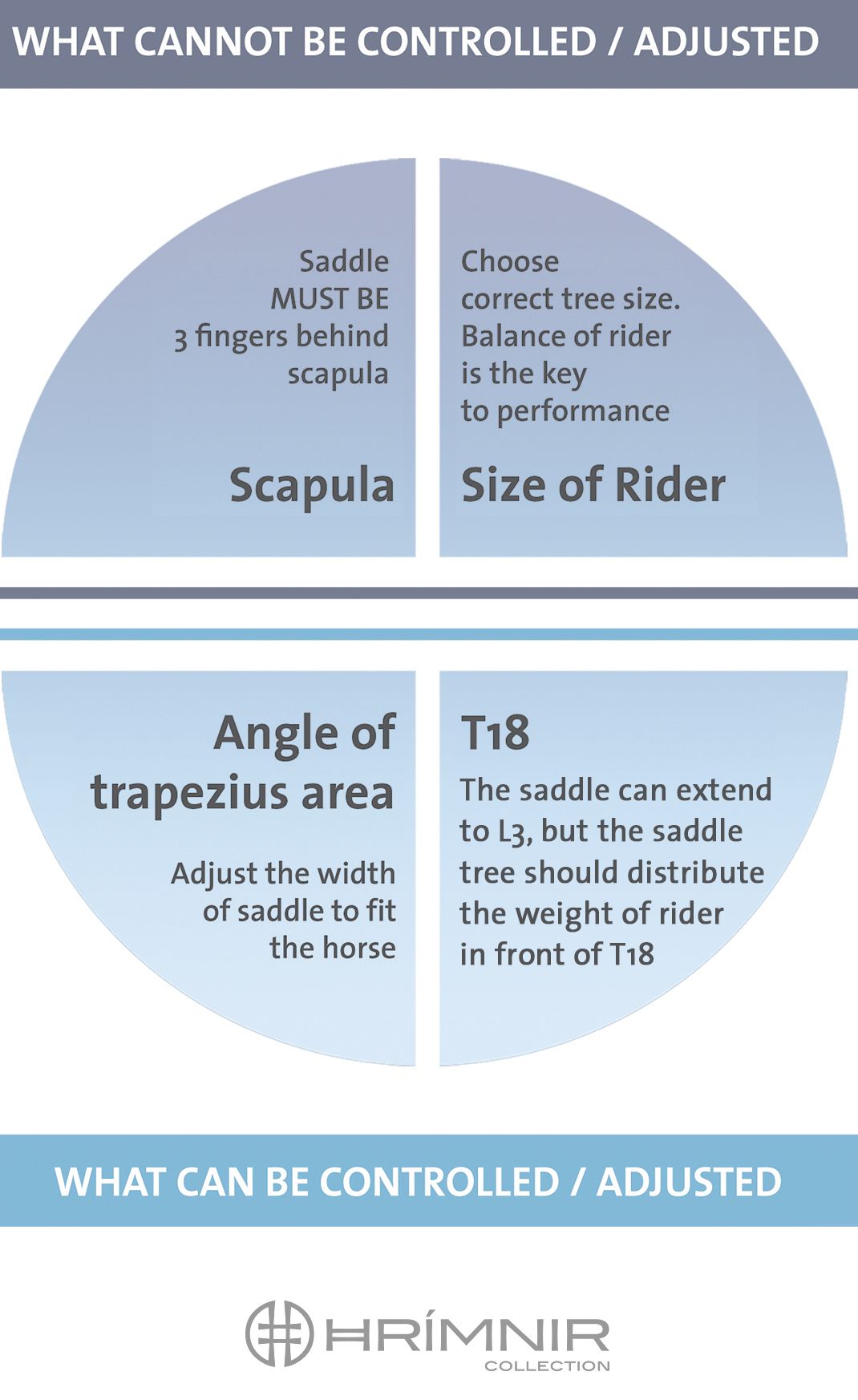
Today, many riders think that shorter saddles are better for their horses. However, the most important factor here is the balance of the saddle, because it guarantees an even pressure distribution over the horse’s back. If the seat is not balanced correctly over the panels, or even extends back over them, pressure distribution in the panels is no longer even and pressure accumulates in the rear parts of the panels. This is very uncomfortable for the horse and restricts free movement of the back muscles.
The overall balance of the saddle should be considered first, in order to ensure an optimal and even pressure distribution over the horse’s back. Shorter saddles are not better for the horse if they are balanced incorrectly, and the size and weight of the rider must also be taken into consideration. Heavy riders in short saddles mean more pressure concentration on a smaller area of the horse´s back.
A saddle should always fit the rider’s size. If it is too small for the rider, he will sit too far back in the saddle. This leads to uneven weight distribution in the panels and pressure accumulation in the rear part of the saddle. This, again, prevents even pressure distribution on the horse’s back, which is the main criterion for a good saddle. The seat must always offer the rider enough space for a supple position to allow harmonious and correct riding.
Always make sure that the seat is big enough for the rider but is still well balanced over the panels which distribute the rider’s weight evenly over as large an area as possible on the horse’s back. Of course, the correct position of the saddle on the horse’s back should be guaranteed at the same time.
When considering the length of a saddle, these are important factors:
- correct choice of seat size for build and weight of the rider
- correct balance between seat and panels
- even weight distribution over the horse’s back on as large an area as possible, while ensuring the correct position of the saddle on the horse’s back
This chapter is written to broaden riders’ understanding of the components of a saddle, its fit, and how it works. If a horse is tender, sore, or lame, you should contact a veterinarian immediately. If the horse doesn’t have a balanced topline, has white marks on the back, or reacts to pressure on the back, you should contact a professional trainer or saddle expert. If you find a problem with the saddle, please contact the dealer, or another saddle expert.
